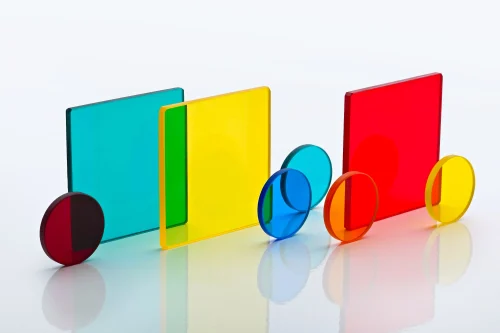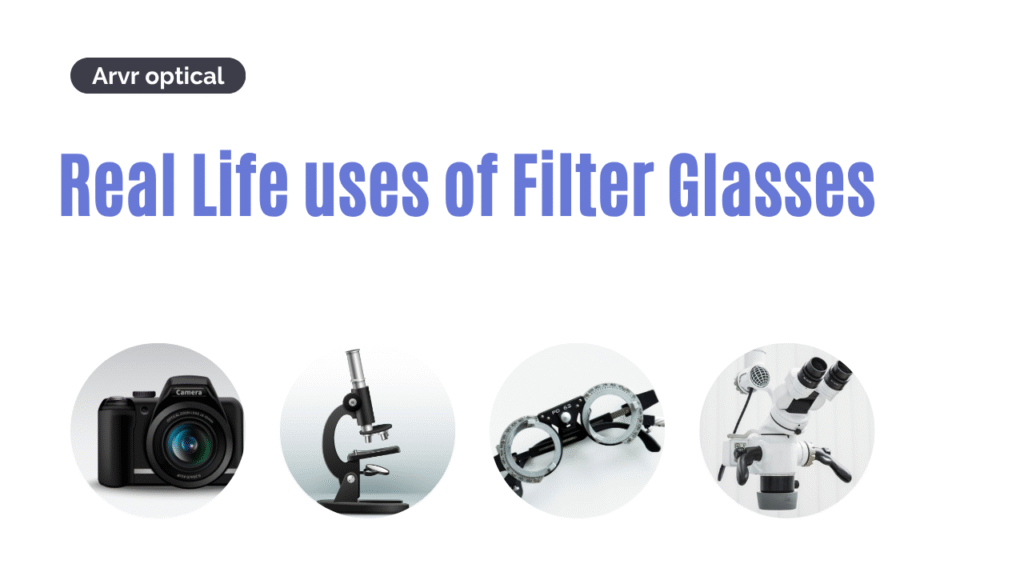Filter glass is a key material in the optical industry, specially designed to manage and manipulate different wavelengths of light. Whether it’s ultraviolet (UV), infrared (IR), or visible light, filter glass can block, transmit, or modify specific bands to meet the needs of various optical systems.
This specialized optical glass is widely used in applications such as cameras, microscopes, laser systems, and medical imaging tools. By controlling light precisely, filter glass improves image clarity, enhances system performance, and provides vital protection for both equipment and users.
In this article, we’ll break down how filter glass works, explore common types like bandpass and neutral density filters, and share where it’s used across industries, from scientific research to industrial automation. If you want to understand how light filtering powers modern optical technology, this guide will give you the essential insights.
Why Is Filter Glass Important in Optics?
Filter glass is important because it helps shape how light is used. Optical tools like cameras, microscopes, and lasers need precise light control. Filter glass makes this possible by:
- Blocking harmful UV rays
- Letting only needed light through
- Reducing glare or reflections
- Improving image clarity
Without filter glass, many optical systems would not work properly or safely.
How Filter Glass Works with Light

Filter glass works by using its special material properties to absorb, reflect, or transmit specific wavelengths. Some filters let red light pass but block blue. Others cut out infrared heat or ultraviolet light. This helps:
- Improve image or signal quality
- Protect delicate sensors
- Keep users safe from harmful rays
Different filters are made for different light tasks.
Types of Filter Glass Used in the Industry
Here are the most common types of filter glass used today:
1. Color Glass Filters
These filters absorb unwanted colors or light ranges. They’re used in photography, lab tools, and displays.
2. UV Filter Glass
This glass blocks harmful ultraviolet rays. It’s used in cameras, microscopes, and protective eyewear.
3. Infrared (IR) Filter Glass
IR filter glass blocks heat-producing infrared light. It’s found in thermal cameras, sensors, and remote controls.
4. Bandpass Filters
These only let a small range of light wavelengths through. They’re perfect for medical imaging, lab lasers, and optical tests.
5. Neutral Density (ND) Filters
ND filters lower the brightness without changing color. They’re popular in photography and scientific lasers.
Real-Life Uses of Filter Glass
Filter glass is everywhere in the optical world. Here are some key areas where it’s used:

- Cameras & Lenses – To block glare or adjust colors
- Microscopes – For better contrast and safety
- Lasers – To protect eyes or focus beams
- Medical Devices – Like X-ray or surgical tools
- Defense & Aerospace – In targeting or sensor systems
- Spectroscopy Equipment – For measuring light with precision
Each use needs a different type of filter glass to get the best result.
Choosing the Right Filter Glass
Picking the right filter glass depends on your project. Ask yourself:
- What type of light do I need to block or pass?
- Do I need heat or UV protection?
- Should the glass change color or keep it natural?
- Does the glass need to be strong or heat-resistant?
Talking with an optical expert can help you pick the best filter for your needs.
Care and Maintenance Tips for Filter Glass
To keep filter glass working well, follow these tips:
- Clean gently with soft cloths and lens-safe cleaners.
- Avoid scratches by using lens caps or cases.
- Keep dry and dust-free during storage.
- Handle with gloves to prevent fingerprints or oils.
Proper care keeps your optical filter performing better for longer.
Final Thoughts
Filter glass is an important part of many tools that use light. It helps block, pass, or change certain types of light like UV, IR, or colors. People use it in cameras, microscopes, lasers, and even in space tools to make them work better.
By learning about the different kinds of filter glass, you can choose the right one for your project. Some filters block too much light, while others let the perfect amount pass through. Keeping the glass clean and using it the right way also helps it last longer.
Whether you’re just starting out or already work with light tools, knowing how filter glass works will help you a lot. It makes your tools safer, clearer, and more useful. So, next time you use a camera or see a laser, remember—filter glass is quietly doing its job to make everything work just right.

